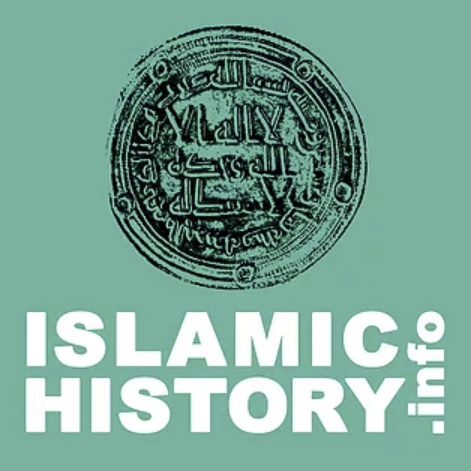Introduction
A common myth propagated by some groups is that the khilafah ended 1924. This is despite the fact that the Prophet (ﷺ) said: “The Prophetic khilafah will last for thirty years. Then Allaah will give the dominion to whomever He wills” (Abu Dawud, Saheeh al-Jaami’ as-Sagheer).
The Prophet (ﷺ) also said: “The Khilafah after me in my Ummah will last for thirty years. Then there will be kingship after that” (Musnad Ahmad). Both these hadeeth provide prophetic precision to show that the khilafah, which has an unbroken chain, will endure for thirty years and then there will be kingship. If we do a quick mathematical calculation we will learn the accuracy of the Messenger’s words: Abu Bakr (2 years) + Umar (10 years) + Uthmaan (12 years) + Ali (6 years) = 30 years.
Twelve Caliphs
There is another narration which states that there will be twelve khulaafah.
Jaabir ibn Samurah said: I entered upon the Prophet (ﷺ) with my father, and I heard him say: “This matter will not end until there have been among them twelve caliphs.” Then he said something that I could not hear, and I said to my father: What did he say? He said: “All of them will be from Quraysh.” (al-Bukhaari and Muslim).
The Prophet (ﷺ) also said: “Islam will continue to prevail through twelve caliphs.” The scholars including Nawawi, al-Qurtubi and Ibn Taymiyyah explain the hadith of twelve khulafah to mean that there will be twelve caliphs who will reign during a period in which Islam is dominant and the people will unite behind them. This occurred during the rulership of Banu Umayyah.
There is no contradiction between the hadith mentioning that the caliphate will be 30 years, and the hadith mentioning twelve caliphs. The first hadith specifically refers to caliphate upon the prophetic methodology, whereas as in the hadith of the twelve caliphs the Prophet (ﷺ) did not mention that they would be upon the methodology of the Prophet (ﷺ). In addition other hadith mention twelve rulers (umaraa’) and not caliphs. (Bukhari).
Khilaafah or Kingship
After this thirty year period of correct guidance, kingship entered the Ummah from the time of Mu’aawiyyah (ra), up until the abolition of the Ottoman state and onwards to our present time. As for some people of knowledge describing the rulers, who came after the Khulaafah Rashideen as ‘khalifahs’, the mere title khilaafah does not change the reality of their kingship. The word “khalifah”, in language terms, simply means ‘successor’, and they were ‘successors’ of hereditary kingship. Hence Mu’aawiyah (ra) said, “I am the first of the kings” (Risaalah of Abi Zayd al-Qayrawaanee) and every ruler who came after him was a king, even if he was given the title ‘Khilaafah’.
The Ottoman State
In stark contrast to the early Muslim rulers, the Ottoman State judged by a mixture of Islamic law and the “Kanun” law based upon local customs much of which were remnants of the Yasaa of Genghis Khan. Laws contradicting the Sharee’ah were introduced within the Ottoman State as early as the fifteenth century, culminating in a French-type secular criminal code and court system in the 19th century.
Changing and replacing the Sharee’ah
Sultan Muhammad al-Fatih, (born 1432 CE) the conqueror of Constantinople, changed the capital punishments (i.e. chopping off the hand etc) and replaced them with monetary fines. Sultan Sulayman al-Qanuni completed this legislative process (Tarikh ad-Dawlat al-’Uthmaniyyah Muhammad Farid Beg pp.177-178). Do groups such as Hizb ut-Tahrir declare the noble conqueror of Constantinople, Sultan Muhammad al-Fatih to be a Kafir for changing some of the penal laws of Islam?
Sami Zubaida states: “in Ottoman practice qadi courts did deal with penal cases, alongside other tribunals, but these courts were required to apply kanun regulations (i.e. man-made law) alongside the shari’a….there was a general reluctance to apply limb-amputation penalties, and the combination of strokes and fines became predominant. Fines are alien to the shari’a tradition, and early jurists prohibited them explicitly: criminals should not have been able to avoid divinely prescribed punishments by paying fines... (Sami Zubaida: Law and Power in the Islamic World pp 107-108).
The decline of the Ottoman state
The Ottoman state was in a state of decline and stagnation by the eighteenth century. In the sixteenth and seventeenth centuries the capitulations system circumvented the independence of the Ottoman state. It was a system which meant that European traders living in Ottoman territory were not required to observe the law of the land and thus had their own courts and laws by which they were ruled by, they were no longer subject to government control. They were also not subject to taxes and could import and sell goods at any price they chose. By the nineteenth century, France Russia and Britain were occupying parts of its territory and various Ottoman provinces were semi-autonomous and under effective control of local rulers. Thus in this ‘Khilaafah’, non-Muslims were completely independent of the Muslim authorities.
Taking help from the non- Muslims
In 1838 during the Second Turko-Egyptian War, the head of the Prussian Army, Helmuth von Moltke, was requested by Sultan Mahmood the Second, to modernise the Ottoman army and advise Ottoman generals in their fight against Muhammad Ali Pasha (Khaled Fahmy: All the Pasha’s Men pp 274-278). The latter, who was an independent Ottoman governor of Egypt, invaded Syria in 1831. Nicolas the First of Russia had also sent an army to aid the Ottomans against Muhammad Ali Pasha before in 1832 during the First Turko-Egyptian War. So non-Muslim military strategists and troops were used to fight against other Muslims. In addition, during the Crimean War (1854-1856) the Ottomans sought help of Britain and France against the Russians.
Towards a secular law
The Tanzimat reform era (1839-1876) brought with it a range of reforms such as the development of a secular school system, the introduction of new codes of commercial and criminal law based on French law and the abolition of the Jizya. The Ottoman Penal Code of 1858 was based on the Napoleonic Code of 1810 and put aside Islamic punishments. It established a French-type court system with tribunals, courts of appeal and a high court of appeal all based on the hierarchy of the secular court system. This secular criminal code and court system remained until 1923.
Under Sultan Abdul Hamid the Second (1876-1909), a new constitution called the Qanun al-Asasi was established. The Constitution proposed a parliament divided into two parts: The senators were elected by the Sultan, and the Chamber of Deputies was elected by the people, although not directly (they chose delegates who would then choose the Deputies). There were also elections held every four years to keep the parliament changing and to continually express the voice of the people.
The Ottoman Constitution (1876) states under ‘Chamber of Deputies’: “Article 66. The election is held by secret ballot. The mode of election will be determined by a special law” and under ‘Law Courts’ says: “Article 87. Affairs touching the Şeriat (i.e. Sharee’ah) are tried by the tribunals of the Şeriat. The judgment of civil affairs appertains to the civil tribunals” hereby differentiating between the Sharee’ah and Civil Law. A secular law school called the Istanbul Law Faculty was established in 1875 to train judges, advocates and public prosecutors for the non-Islamic courts.
By 1916, jurisdiction was transferred from the Muslim courts to the Ministry of Justice. The following year, a new family code based upon European principles was announced.
Keeping the myth alive
Despite the authentic hadith and historical records, some groups continue to promote the myth that Islam, in the early 1920’s, was a fully functioning system. In other words, they wish to keep romantic notions alive that it wasn’t that long ago when the Muslims were completly ruling by the Sharee’ah. Hence to return back to the Khilafah, all that is needed is a quick-format transformation back to the days of 1924.
Their fast track method totally opposes the divine law, namely that honour, victory, and strength will only come to this Ummah when we return and unite upon the pure religion as it was brought by the Prophet (ﷺ) and practiced by the Companions. Only when we single out Allah, alone, in worship and give obedience to Him and His Messenger, will the Help of Allah come.
(Taken from the book: from A Critical Study of the Multiple Identities and Disguises of ‘al-Muhajiroun, By Abū Ameenah ’AbdurRahmān and ’AbdulHaq ibn Kofi ibn Kwesi al-Ashantī)
Also read the excellent book False Caliphate: A Critical Analysis of Hizb Ut-Tahrir’s Political and Creedal Views.


Very beneficial.